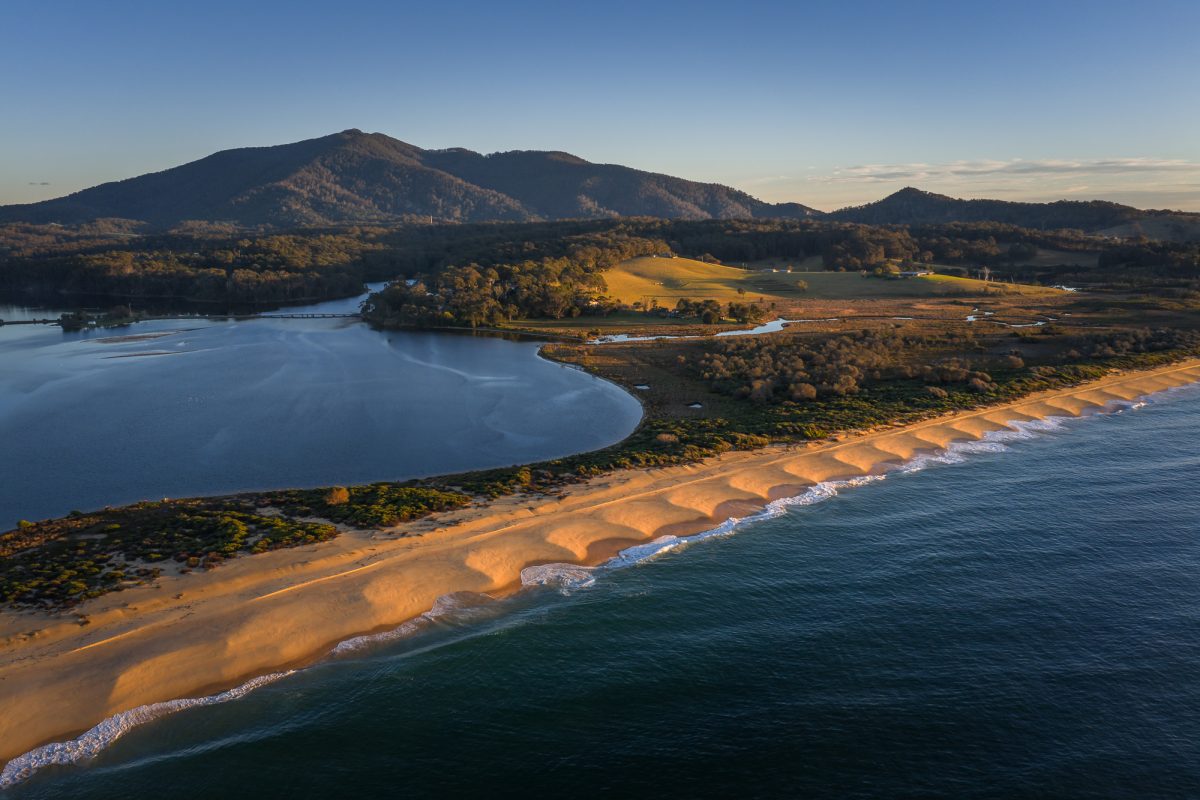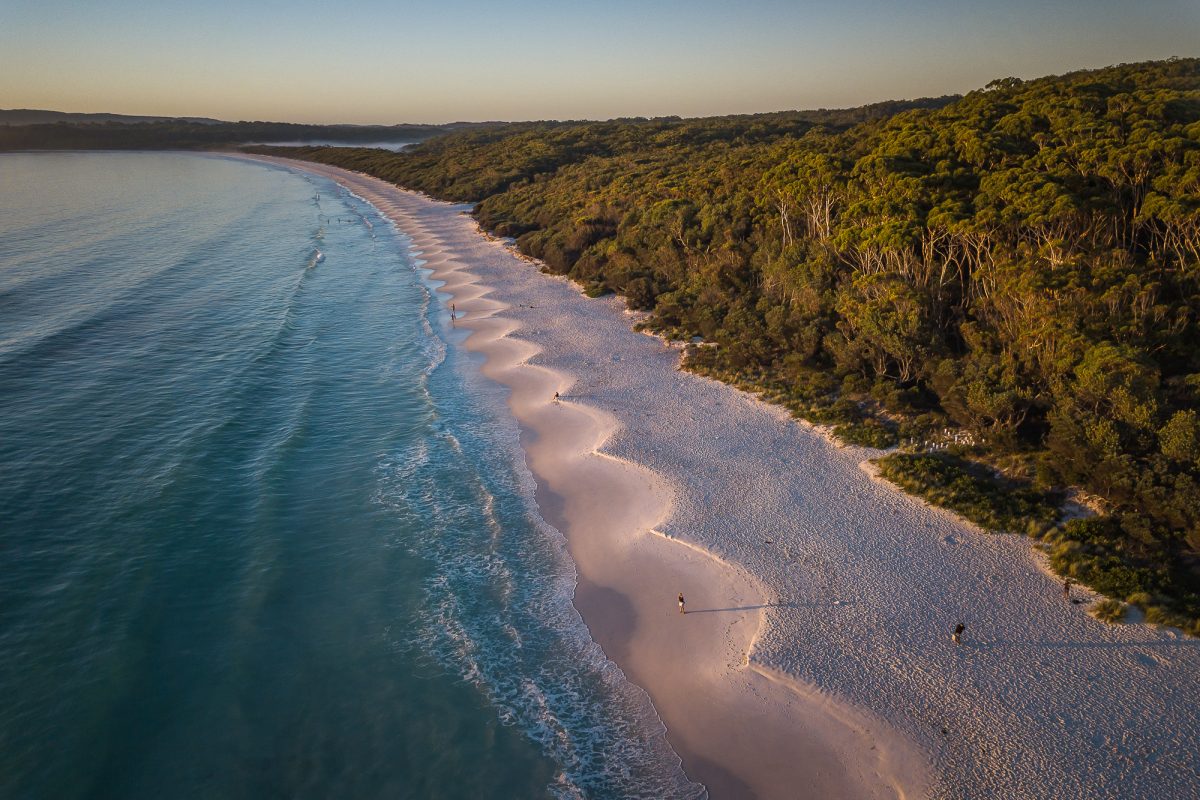
South Coast photographer David Rogers said seeing the beach cusps was “actually quite special”. Photo: David Rogers Photography.
South Coast-based photographer David Rogers was one of a number of beachgoers in late July to come across patterns that seawater had etched into the beach.
He heads outdoors most mornings armed with his camera and came across them by chance.
“It was a clear day, and I actually was setting out to get a photo of Wallaga Lake and Gulaga at sunrise,” he told Region.
“When the sun came up, I could see beach cusps stretching all the way up Wallaga Beach. It was probably at least a kilometre long and very identifiable.”
For years, the photographer has been taking shots of people and places in the region, but this was the first time he’d seen the patterns within the area.
In the past, he’d seen them further north, in Jervis Bay.
“When I saw them at Wallaga, I knew exactly what they were … I was quite keen to get a great photo of them.
“That’s what makes the magic. It’s nice to see four or five, but when you see a full kilometre of that repetitive pattern, it’s actually quite special.”
Beach cusps are formed when seawater pushes the sand into a curved pattern.
The University of NSW’s Mitchell Harley said it looked “almost like a giant has come and taken a big ice cream scoop out of the beach at regular intervals along the beach”.
The associate professor from the Water Research Laboratory is a leading expert in coastal erosion and its impacts.
“They’ve been studied for a good part of 100 years now, because they’ve been fascinating to coastal researchers for a long time,” he said.
“Obviously, they’re very spectacular, and how they form has been a huge, really fascinating scientific question.”

David also shot beach cusps in Jervis Bay. Photo: David Rogers Photography.
Associate Professor Harley said there were competing theories on why they formed along the coast, but there must be a few factors in place before they could happen.
“They typically form in low- and lower-energy environments, when the waves are generally quite calm, and they tend to form on beaches which have relatively coarse sand.”
It means that around the world, the cusps often form at places that see smaller waves.
“Wallaga Beach is a classic example of a beach that would have regular beach cusps,” he said.
“[They are more likely to form at] any beaches, bays and estuaries which are protected from large waves, because they’re created under these lower wave conditions.
David said the photographs were shared widely across social media, with more than 50 shares.
“I knew that they would be of general interest, and that’s why I posted them quite immediately [after seeing the beach cusps],” he said.
“I love that shot. It’s not only got the beach cusps there, but you’ve also got Gulaga and Wallaga Lake in the background.
“It’s also a great location shot that has an icon that everyone knows.”







